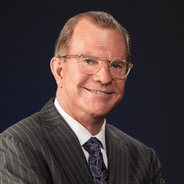5 minutes
How exciting was your last strategic planning retreat? Did the board settle on familiar messages from the CEO and/or consultant, or did you think strategically enough to feel at times as if you might be out on a limb without a safety net?
Many strategic retreats resemble zombie dances, characterized by tired conversation on extending existing branching, technology or merger initiatives. Some planning only renames existing operational goals with popular lingo like “digital strategy,” “organic growth” or “marketing refresh.” When did your planning process actually result in a fresh approach to your marketplace, brand, digital products or member service? If it’s been a while, then you’re in a rut. If, on the other hand, your credit union is pursuing one or two exciting new ideas a year, then you’re hitting a solid strategic thinking pace.
What do exciting strategy sessions look like? Directors need permission to think in different ways about what value the credit union offers members and how best to capitalize on and convey that value. Some paradigm-shifting questions can energize board discussion and inevitably lead to fresh perspectives on persistent member services challenges. Just asking, “How might our younger members redesign our services if they had a chance?” can lead to some interesting stretches in thinking. Likewise asking, “How would our older members redesign our offerings?” helps validate or stretch your thinking about such factors as home equity lines of credit and wealth management services. Better yet, convene focus groups of these demographics to jump-start the conversation so you’re actually hearing the “voice of the member” in the conversation. Can your marketing department answer exactly what younger and older members want?
Boards should revisit some questions at least once a year. One is, “If we were about to go out of business and needed to merge with another credit union to protect our members’ interest, who might we choose?” This leads to some interesting marketplace discussions about competition. It may be uncomfortable to envision such a conversation, but it’s a paradigm-shifting technique that frequently leads to fresh perspectives. Another question that chases the zombies from strategic planning is “What community bank(s) might we consider for purchase?” Yes, it’s the 21st century, and credit unions are buying community banks as part of strategic growth initiatives!
Nearly every board I work with has “governance development” issues. How candid are your conversations around your governance process and board makeup? How do you ensure the board is considering the latest questions posed by the governance literature and global board surveys? One board recently told me they “led the pack” when it came to governance, yet they lacked some of the more modern governance practices of term limits, officer development, board succession pipeline, strategic rhythm and real metrics to track strategic progress. Maybe more importantly, they had not discussed the board makeup they might need five years from now nor created a board profile of desired mix of experience and competencies. All of these elements are in the contemporary literature, but it’s easy not to consider upgrading if the status quo seems sufficient. Governance is a strategic issue that deserves robust assessment and candid thinking even though it might hurt the feelings of a 24-year tenured director.
Possibly during your planning session you used brainstorming to develop a list of ideas, initiatives and new products or services to consider. How many of those ideas were a bit scary due to complexity, risk or budget investment? If the answer is “not many,” then you didn’t brainstorm. You just listed a bunch of usual suspects that most likely could have been developed by a good strategic consultant prior to meeting the board.
When you trimmed down the brainstorming list to the “keeper” ideas, what did you do with the discarded ideas? Go back and look at those left on the table. What assumptions were represented in why they were discarded? What values does this discussion uncover that your board and/or executive team is making about what good strategic ideas look like? What does this discussion tell you about your willingness to think big? Which ideas were executives reluctant to spend much time on? Could this tell you more about their risk appetite than yours?
I worked with a board for three years on strategy. Each year the board pre-session survey brought up the same ideas about refreshing branches, geographical expansion, digital products and potential mergers. When a younger board member demonstrated the digital banking he had with a different institution, the CEO grumbled about how expensive it was rather than helping the board find options that could be adopted over the next couple years. The board members told me privately they were frustrated but even with facilitation were reluctant to push back because “we like our CEO.” After three frustrating years—for me and the board—I told directors in closed executive session I was terminating our relationship because they didn’t have enough leadership will to chase the zombies from the board room.
Against the backdrop of strategic development, make sure you explore the question: “If we knew we could not fail, what would we put on our agenda?” This question gives directors permission to do bigger thinking by reducing their fear of seemingly risky ideas. Maybe some of the ideas the board is interested in exploring, such as digital strategy, could be addressed by asking: “If money were no object, what would our digital strategy be?” I use both of these questions to generate strategic thinking, and they consistently lead directors to fresh perspectives on strategy. They may not go “all in” on digital innovation, mergers or new board policies, but they often discover enough fresh thinking to identify new territory, commit to reasonable risk and come away energized.
If your last planning session was less than inspiring or energizing, it’s time for a conversation on how to put “strategic” back in your strategic planning. And remember: No zombies allowed.
Les Wallace, Ph.D., the 9Minute Mentor, is president of Signature Resources Inc. He is co-author of A Legacy of 21st Century Leadership and author of Principles of 21st Century Governance. Wallace is a frequent speaker and consultant on leadership and governance.






